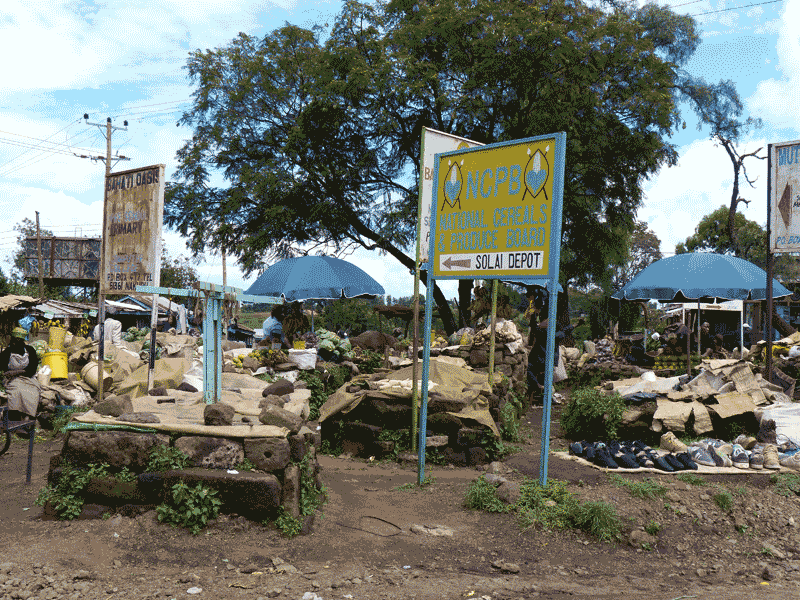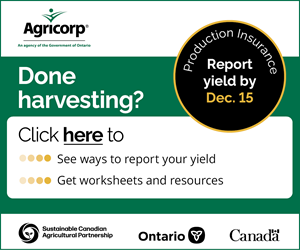Stabilizing food prices
PART 5 – EXPOSURE-4-DEVELOPMENT TOUR
food prices are the heart of politics in Kenya, just as agriculture is the heart of their economy. Prices for food staples have been rising steadily since 2007, putting increasing pressure on the nearly 50 percent of the population that lives in extreme poverty, including many of the nation’s farmers.
It is hard to imagine that high prices do not benefit farmers; but according to the Kenya Integrated Household Budget Survey (KIHBS 2006) over 60 percent of crop and livestock producers are net buyers of food, and food costs account for 60 percent of expenditures in farming households.
Kenya is a net food importer on the national level as well. According to the United Nations Food and Agriculture Organization, domestic production of maize, the primary food crop, falls short by an estimated 500,000 metric tonnes per year. As a result, Kenya imports maize formally and informally from neighbouring countries, including Uganda, Tanzania and Malawi.
“The problem of food security in this country is about governance. Those who are in positions to fix the situation are not willing,” says Booker Owuor, Executive Director, Kenya Small Scale Cereal Growers, and author of Understanding Food Prices in Kenya, an EcoFair Trade Dialogue discussion paper published in November 2012.
“We have vast lands and fresh water; we should be food secure,” he says. According to Owuor, efforts by the Kenyan government have been poorly implemented and have caused market distortions as a result of structural and institutional flaws that exacerbate price volatility.
price volatility
When Kenyan farmers talk about price volatility, there are three major factors: seasonal price fluctuation dictated by supply and demand cycles, the rise and fall of input prices on the international markets, and local and national attempts of the Kenyan government to stabilize rising food costs with market interventions.
Prices of agricultural commodities in Kenya follow the production cycle, peaking just before the harvest begins, and dropping during the harvest season. Maize marketing is the official responsibility of the National Cereals and Produce Board (NCPB), who sets the price of maize after the harvest is complete.
“The grain market is very disorganized,” says Richard Moruthi, a maize farmer and extension officer. “The government decides when to buy from farmers and what they are going to pay you. They may offer better prices than the middle men, but at least the middle men pay promptly.”
The need for prompt payment is a common refrain from farmers, including Phillip Gitata, a larger-scale cereal farmer near Nakuru who opts to sell his wheat, maize and oats through middle men instead of the NCPB as well.
“We can’t store the crop and need a quick return,” he says. “The brokers will also do the transportation, so we don’t have the hassle.”

transportation and storage
Transportation and storage capacity are ongoing issues, not just for the farmers, but for management of the national food supply. The NCPB and other organizations have attempted to introduce warehousing schemes for farmers, but small producers are challenged to meet minimum production requirements, and are deterred by high administrative fees.
“You don’t store maize when you have problems in the pocket,” says Moruthi, who built his own storage facilities four years ago that allow him to ride out the low end of the price cycle, and increase his profits without working through the government brokers.
While Kenya may have the land and water to be food secure, they have yet to develop domestic capacity to produce agricultural inputs like fuel, fertilizer and seed, making them vulnerable to fluctuations in the international markets. In recent years, the Kenyan government has partnered with aid organizations to subsidize fertilizer for small scale farmers – an initiative that many feel missed the target.
“More often than not the subsidized fertilizer is delivered late, and only the rich farmers can afford to buy it to keep for the next year. It’s well-intentioned, but poor stay poor, rich stay rich and it distorts the market with subsidized fertilizer,” says Owuor.
Faced with a choice between investing in inputs or feeding their families, farmers cut inputs first, adversely affecting crop yield and quality and further threatening food security.
Once harvest is complete, prices become increasingly volatile as larger producers with the capacity to store their crops, start hoarding in anticipation of better prices later in the year. While it sounds like a good business strategy for producers, in an environment where the food supply is vulnerable, it more often triggers the government to drop import tariffs and flood the market with maize from neighbouring countries.
The future hangs in a very delicate balance.
For Owuor, hope rests in the development of transportation infrastructure to improve distribution and reduce local-level food disparities, the development of national oil reserves and fertilizer manufacturing capacity, and the use of communications technology to empower local farmers with real-time information about local and national markets. It is an ambitious vision, but it may be the kind of radical re-imagining needed to make progress where the usual stop-gap measures have failed. •





















